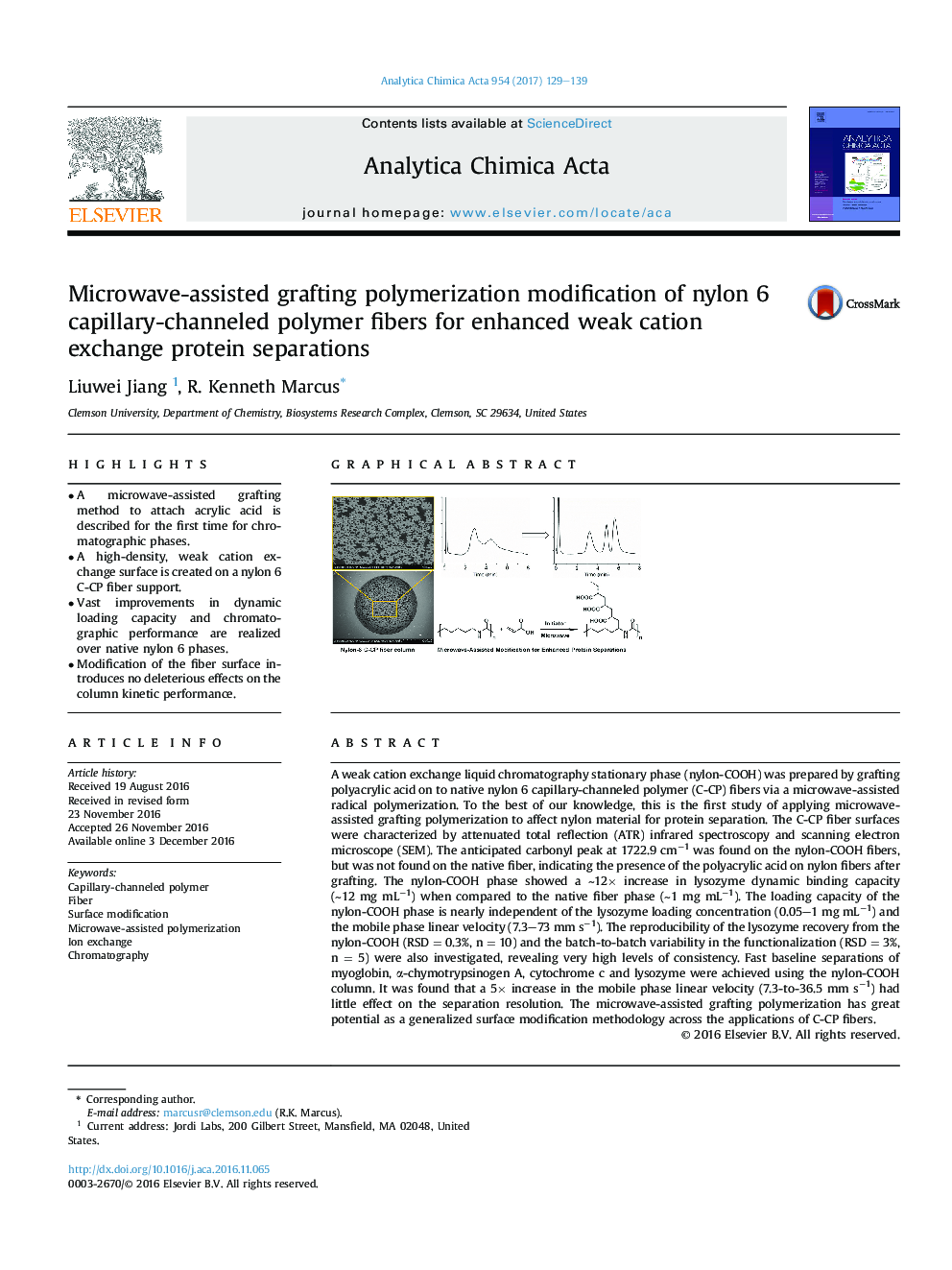| کد مقاله | کد نشریه | سال انتشار | مقاله انگلیسی | نسخه تمام متن |
|---|---|---|---|---|
| 5131162 | 1490878 | 2017 | 11 صفحه PDF | دانلود رایگان |

• A microwave-assisted grafting method to attach acrylic acid is described for the first time for chromatographic phases.
• A high-density, weak cation exchange surface is created on a nylon 6 C-CP fiber support.
• Vast improvements in dynamic loading capacity and chromatographic performance are realized over native nylon 6 phases.
• Modification of the fiber surface introduces no deleterious effects on the column kinetic performance.
A weak cation exchange liquid chromatography stationary phase (nylon-COOH) was prepared by grafting polyacrylic acid on to native nylon 6 capillary-channeled polymer (C-CP) fibers via a microwave-assisted radical polymerization. To the best of our knowledge, this is the first study of applying microwave-assisted grafting polymerization to affect nylon material for protein separation. The C-CP fiber surfaces were characterized by attenuated total reflection (ATR) infrared spectroscopy and scanning electron microscope (SEM). The anticipated carbonyl peak at 1722.9 cm−1 was found on the nylon-COOH fibers, but was not found on the native fiber, indicating the presence of the polyacrylic acid on nylon fibers after grafting. The nylon-COOH phase showed a ∼12× increase in lysozyme dynamic binding capacity (∼12 mg mL−1) when compared to the native fiber phase (∼1 mg mL−1). The loading capacity of the nylon-COOH phase is nearly independent of the lysozyme loading concentration (0.05–1 mg mL−1) and the mobile phase linear velocity (7.3–73 mm s−1). The reproducibility of the lysozyme recovery from the nylon-COOH (RSD = 0.3%, n = 10) and the batch-to-batch variability in the functionalization (RSD = 3%, n = 5) were also investigated, revealing very high levels of consistency. Fast baseline separations of myoglobin, α-chymotrypsinogen A, cytochrome c and lysozyme were achieved using the nylon-COOH column. It was found that a 5× increase in the mobile phase linear velocity (7.3-to-36.5 mm s−1) had little effect on the separation resolution. The microwave-assisted grafting polymerization has great potential as a generalized surface modification methodology across the applications of C-CP fibers.
Figure optionsDownload high-quality image (357 K)Download as PowerPoint slide
Journal: Analytica Chimica Acta - Volume 954, 15 February 2017, Pages 129–139